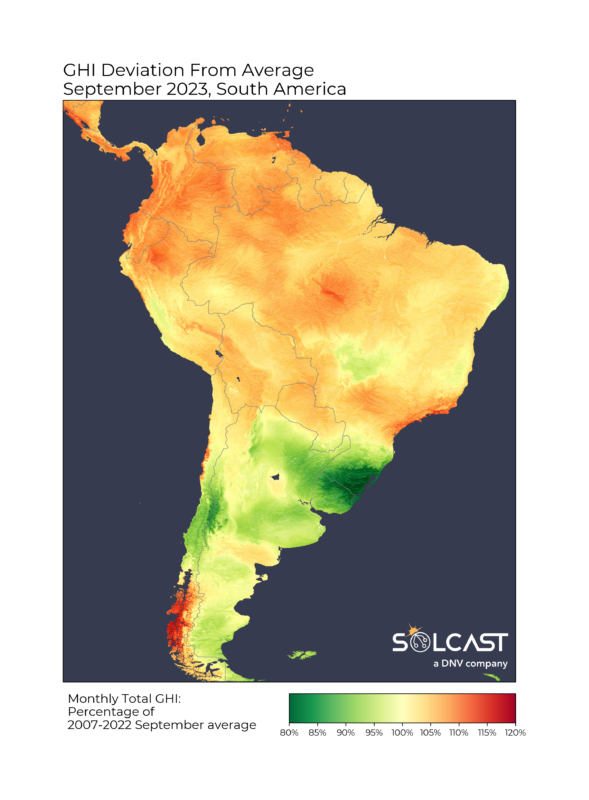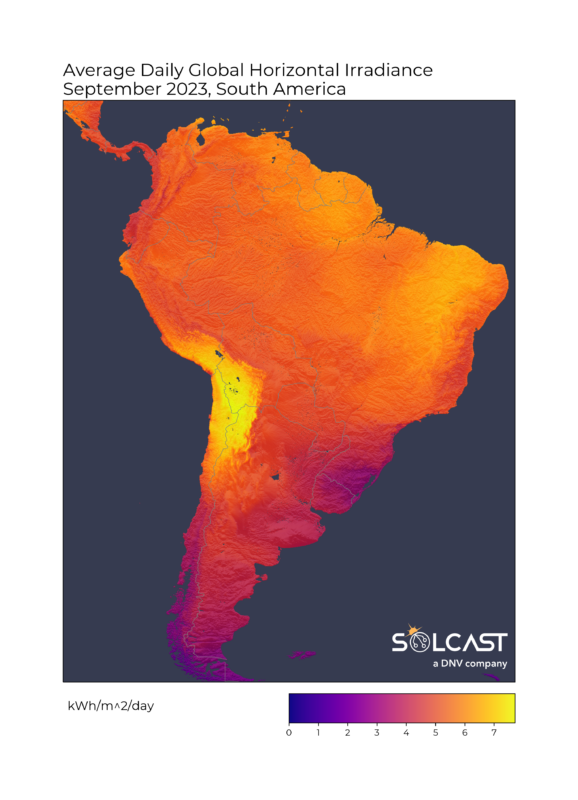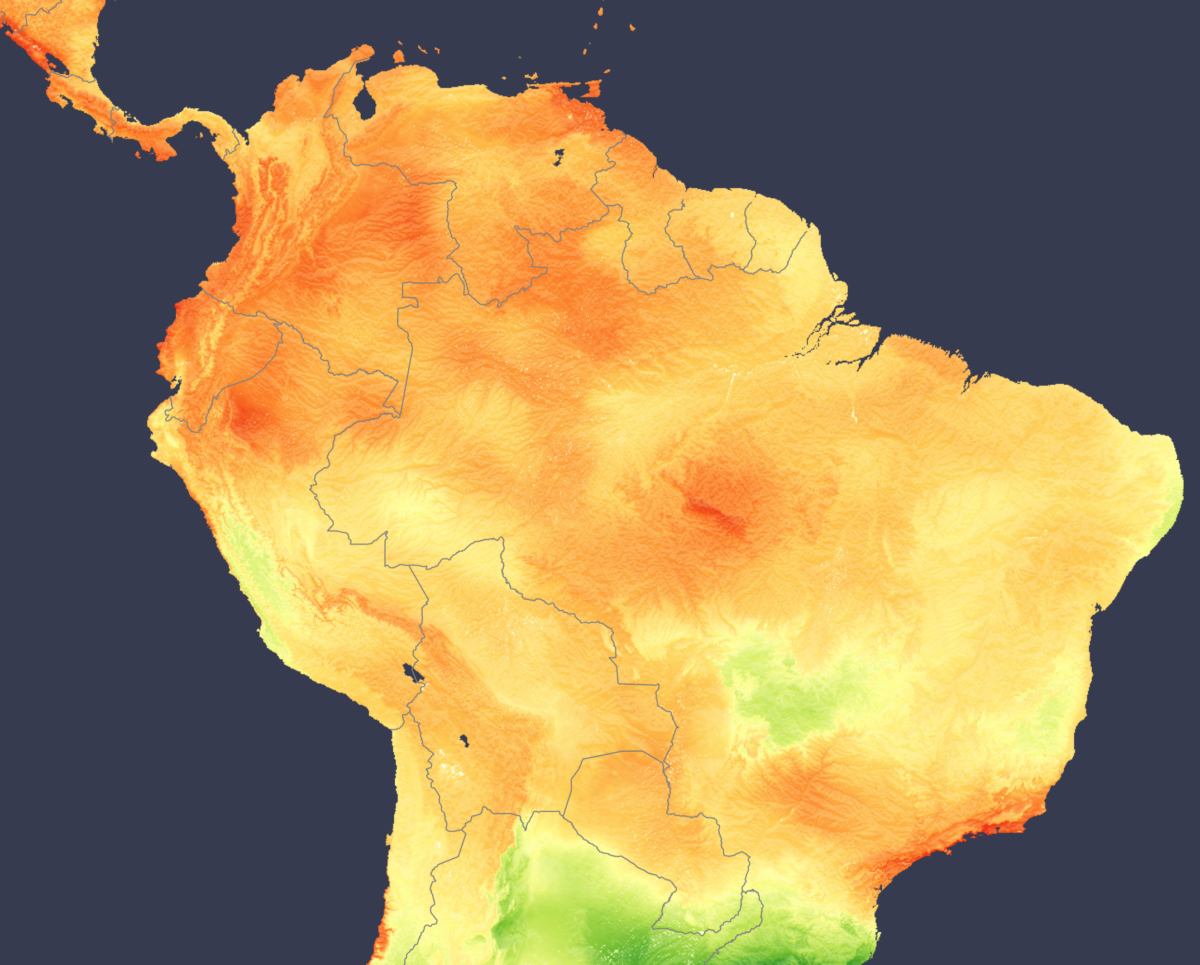Reduced moisture in the Amazon delivered clear skies and increased irradiance across the tropics of South America. Solar assets in the region saw 110-120% of average monthly irradiance through September.
A strong and slow-moving storm early in the month lessened irradiance in southern Brazil, but the rest of mid-latitude South America saw mostly normal irradiance, according to data collected by Solcast, a DNV company, via the Solcast API. The Altiplano Plateau saw the highest irradiance for the whole continent. This is in line with historical averages, as the area records some of the highest irradiance levels in the world.

In September the tropics saw higher irradiance than usual. This was due to clearer skies caused by the current drought in the Amazon. The northeastern part of the Amazon has been dry since mid-July, resulting in reduced moisture in the rainforest and less evapotranspiration. This is a major source of moisture fuelling cloud formation over rainforest regions.
The region saw regular cumuliform clouds typical of tropical regions, but not the large storms and rainfall events that are typical of the start of the wet season in September. The rivers in the Amazon are reported to be at their lowest level in over a century as there has been a lack of rainfall and ensuing dry conditions in recent months. This has been exacerbated by warm conditions, as South America recorded the warmest September extending from heatwaves.

The Brazilian southern states of Rio Grande de Sul and Santa Catarina saw reduced irradiance. It recorded 10-20% below September averages and is due to an unusually strong extra-tropical cyclone. The storm moved onshore from the Atlantic in early September, and it’s slow-moving nature meant the irradiance impacts were more focussed and intense. Most of the remainder of mid-latitude South America saw much more moderate irradiance at or slightly below the long-term average.
Solcast produces these figures by tracking clouds and aerosols at 1-2km resolution globally, using satellite data and proprietary AI/ML algorithms. This data is used to drive irradiance models, enabling Solcast to calculate irradiance at high resolution, with a typical bias of less than 2%, and also cloud-tracking forecasts. This data is used by more than 300 companies managing over 150 GW of solar assets globally.
The views and opinions expressed in this article are the author’s own, and do not necessarily reflect those held by pv magazine.
This content is protected by copyright and may not be reused. If you want to cooperate with us and would like to reuse some of our content, please contact: editors@pv-magazine.com.



3 comments
By submitting this form you agree to pv magazine using your data for the purposes of publishing your comment.
Your personal data will only be disclosed or otherwise transmitted to third parties for the purposes of spam filtering or if this is necessary for technical maintenance of the website. Any other transfer to third parties will not take place unless this is justified on the basis of applicable data protection regulations or if pv magazine is legally obliged to do so.
You may revoke this consent at any time with effect for the future, in which case your personal data will be deleted immediately. Otherwise, your data will be deleted if pv magazine has processed your request or the purpose of data storage is fulfilled.
Further information on data privacy can be found in our Data Protection Policy.